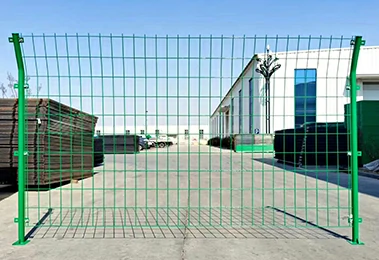Stainless steel cables are versatile components that have revolutionized numerous industries due to their durability and strength. As an expert in materials engineering with years of hands-on experience, I've witnessed firsthand how these cables have fundamentally altered various sectors, ranging from architecture to marine applications. Let’s delve into what makes stainless steel cables stand out and how they can benefit different projects.

Stainless steel cables are renowned for their exceptional resistance to corrosion and superior strength-to-weight ratio. This makes them ideal for environments where traditional materials might fail. In infrastructures, for instance, they provide unparalleled stability and aesthetic appeal. The architectural domain frequently harnesses the sleek and modern look of stainless steel cable railing systems. These not only enhance the visual appeal of buildings but also ensure safety—a paramount concern in public spaces.
From the perspective of expertise, the unique properties of stainless steel cables stem from their alloy composition. Typically, they are composed of chromium, which provides the inherent corrosion resistance of the steel. During production, meticulous processes ensure that these cables meet stringent standards for durability and tensile strength. This expertise makes stainless steel cables indispensable in applications where both reliability and longevity are required.

One notable sector where stainless steel cables have become crucial is the marine industry. The harsh, saline environment of seas and oceans demands materials that can withstand constant exposure to elements without degradation. Stainless steel cables excel in this domain, keeping ships’ rigging systems robust and functioning smoothly. They are also extensively used in the mooring of marine vessels due to their durability and resistance to marine biofouling.
In the realm of transportation, particularly in bridges and tunnels, the reliability of materials is non-negotiable. Stainless steel cables provide the essential support required in these massive structures, and their performance over decades has cemented their reputation. Engineers and builders trust stainless steel because they know these cables can endure not just the weight of traffic but also environmental stresses like wind and heavy snowfall.
Authoritative organizations in the industry, including the International Organization for Standardization (ISO) and ASTM International, recognize the pivotal role of these materials and have established standards that govern their production and testing. Compliance with these standards ensures that stainless steel cables remain a trustworthy option for high-stakes projects.
stainless cable
The trustworthiness of stainless steel cable systems is further amplified by their low maintenance requirements. Infrastructure projects are expensive, and the ability to use materials that do not require frequent replacement or repair is economically beneficial. Personal accounts from project managers and construction experts consistently highlight the cost-effectiveness of employing stainless steel cables. These experiences affirm the material’s value in reducing both labor and material costs over time.
While the technical advantages are clear, working with stainless steel cables also requires a nuanced understanding of their specifications. For instance, selecting the appropriate cable diameter and understanding load specifications are crucial for ensuring optimal performance. Partnering with experienced suppliers or manufacturers can help project managers and engineers make informed decisions. The importance of expert knowledge cannot be overstated—it ensures that the selected stainless steel cables meet specific project needs and conform to safety standards.
When considering procurement, it is advisable to source these cables from companies with a proven track record of quality and service. Manufacturers who focus on continuous improvement and adhere to international quality standards offer the best products in the market. Seeking certifications and third-party validations can be an effective way to gauge the reliability of these products.
In terms of sustainability,
stainless steel is often praised for its recyclability. As industries become more conscious of their environmental impact, choosing materials that can be reused and recycled is increasingly important. Stainless steel cables, due to their longevity and ability to be repurposed, align with sustainable practices, offering an environmentally friendly alternative to more traditional materials.
In conclusion, stainless steel cables are a remarkable blend of strength, reliability, and versatility. Their applications across various industries underscore their indispensable nature. By focusing on the critical aspects of performance, expert production processes, compliance with authoritative standards, and trust in their longevity, stainless steel cables prove to be an essential choice for modern engineering and construction projects.
 TEL:
+86-13102802206
TEL:
+86-13102802206
 Email:
fencenetting@china.com
Email:
fencenetting@china.com
 Language
Language
 TEL:
+86-13102802206
TEL:
+86-13102802206
 Email:
fencenetting@china.com
Email:
fencenetting@china.com
 Language
Language



